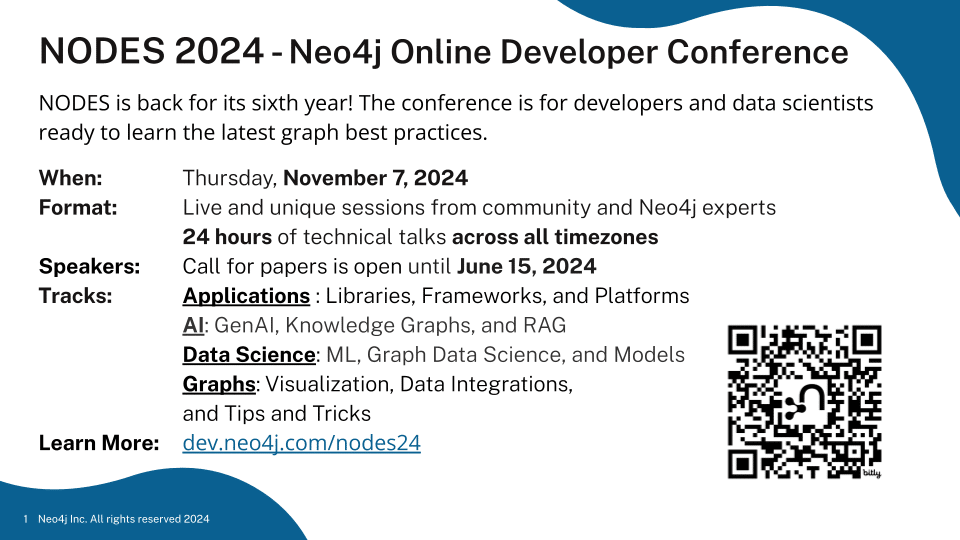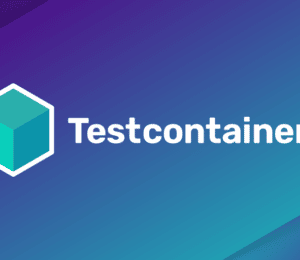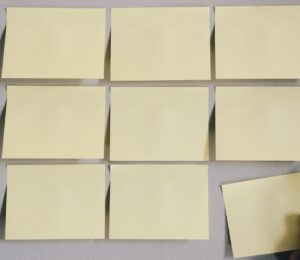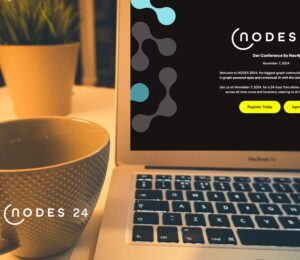NODES 2024: How to Submit a Technical Presentation
- May 16, 2024
- 4403 Unique Views
- 6 min read
There is no shortage of technical events such as conferences, meetups, trainings, hackathons, and so on. These events are a great way to learn new things, connect with people, and share knowledge with others. One of the most valuable and exciting ways to share knowledge is by giving a technical presentation.
Today, we will look at how to submit a technical presentation for an event and get some personal recommendations from me, as well. Though we will specifically gear the information for the NODES 2024 call for proposals, nearly everything discussed can be applied to other technical events and speaking engagements.
Let’s get started!
Event Research
No matter what event you are interested in, do your research! Find out about the event, their goals, the audience, and the types of presentations they are looking for. This information will help you decide if the event is a good fit, as well as help you tailor your submission to the attendees.
NODES 2024 is devoted to technical presentations related to graph data and technologies, with special focus on community stories and perspectives. The audience will be looking for content to inspire ideas, learn how to do/build something, gather tips and tricks, and add skills to their toolbelt for business or personal projects. Developers, data scientists, and other technical professionals are the core audience.

Now let’s decide whether to speak.
Speakers Wanted!
Deciding to submit a presentation to an event is a commitment. It can be intimidating to put yourself out there and share your knowledge with others, plus the effort and time it take to build and polish your content. But it can also be a rewarding and invigorating experience. I always remind myself that my experience and learning journey is unique and can hopefully inspire or help someone else. Everyone can contribute value to a conversation!
As a speaker, you will have the opportunity to share your expertise, connect with others, and learn from the community. Yes, a speaker can (and should) learn from attendees. Understanding what problems others are solving or where gaps are can help you learn more about your topic, plus improve your future content. 🙂
NODES 2024 will be virtual, so no travel or logistics are required. The event will be held over 24 hours, and sessions will be recorded and available for attendees to watch on-demand after the event. So you will have the opportunity to reach a global audience, as well as promote or provide evidence for your efforts!
So, if you are thinking about submitting a presentation to an event, go for it! And if you have decided to submit, congratulate yourself on being courageous and taking the first step. If you’re still on the fence, take some time to think about it and consider reaching out to the event organizers or other speakers for advice. I’m always happy to chat about speaking and help others get started!
Deciding on a Topic
Choosing a topic for your presentation can be challenging. You want to pick something that you are passionate about, that you have experience with, or want to learn about. Try to pick things you like or love. That enthusiasm will come through in your presentation and help keep you motivated as you prepare. If you’re interested in the topic, it’s likely that someone else will be, too.
What projects or technologies are you currently working on? What problems have you solved or are trying to solve? What tools or techniques have you found helpful? What do you wish you knew when you started working with a technology? What mistakes do you want to help others avoid or learn from your experience?
For NODES 2024, the event is focused on graph data and technologies to interact with graphs. Here are some topic ideas to get you started:
- How graphs solve a specific problem (broad or narrow)
- How to build applications that interact with a graph
- How to navigate and query graph data
- How graphs integrate with AI/GenAI
- Tips and tricks for working with tools faster or more efficiently (hidden features, shortcuts, etc.)
- Mistakes or pitfalls to avoid with graph databases, tools, use cases, and more
- How to get data into or out of a graph database
- Improving operations (performance, scalability, debugging, logs, etc.) of graph databases or applications
- Working with graphs in a larger system or architecture
This list could continue on, but hopefully these give some good starting points. Once you have a topic in mind, it’s time to write a session abstract and submit it!
Session Abstract and Submission
The session abstract is a short description of your presentation that will be used to promote your session to attendees. It should be clear, brief, and interesting. It should give attendees an idea of what to expect from your presentation and why they should attend.
There are a few things I always look for when I’m on a program committee choosing sessions for an event.
- Title: Aim for a descriptive phrase that give attendees an idea of what your presentation is about. If you have a clever or catchy title, that’s always a plus (but not required), and make sure it still states your topic.
- Abstract: This is the core of your submission. It should detail what you will cover in your presentation, such as the problem you are solving, what aspects of a technology are involved, what tools could be used, and what attendees will learn.
- Notes for committee: Include any additional information for the committee here. This could be special requirements or why your content is a good fit for the event. I like to include why I felt my topic is important and/or how my experience could help others. Keep this part brief, but it can help differentiate when there are multiple sessions with similar topics.
- Bio: A bio about yourself. Keep this short, but be sure to outline your experience and specialties. If you have content or socials, highlight 1-2 accounts so that attendees or program committee members can learn a bit about you.
There are also a few other things to keep in mind when writing your abstract.
- Audience: Who is your presentation for? What’s their level of experience? What will they gain from attending your session? Choose wording and technologies that resonate with your audience to help readers connect with your content.
- Format/Length: Will your presentation be a talk, a demo, a workshop, a panel, or something else? Are you giving a demo or live-coding? Sometimes you select a format on the submission form, but you can also mention sub-formats with terms like live demo, hands-on, interactive discussion, etc.
I also recommend writing your abstract in a text editor or word processor first. This way, you can easily check for spelling/grammar errors, and you can save your work to reuse or reference later. Editors also typically include work/character counting tools to help track length. Once you have your abstract written, you can copy and paste it into the submission form.
Tips and Tricks
There are a few things that can help make your abstract stand out and increase your chances of being selected. On the flip side, there are a few things to avoid that can hurt your chances.
- Be descriptive + brief: Provide enough details within 1-3 paragraphs so the program committee and attendees get a clear picture of what you will present. If you use jargon or acronyms, explain them. Even if attendees to your session are familiar with them, the program committee may not be, and that can make them feel less confident accepting a session. You can always explain acronyms in the notes section, if you’re unsure.
- Be inviting: You don’t need fancy or fluent language, but a genuine passion or interest in your topic can go a long way. If you are excited about your topic, it will show in your abstract and presentation.
- Be honest: Developers (especially) don’t like to be misled. Avoid hiding negative aspects and sales or marketing tactics. Honesty and authenticity build respect.
There are also some things to avoid when it comes to abstract submissions.
- Minimal effort - People can tell when you don’t care. One-line abstracts and bare minimum details can tell readers that you don’t care about the topic or helping others learn. It’s okay to be brief, but make sure to provide enough information to be helpful.
- In it for me - attendees are giving up their time and focus to attend your session, event organizers are pouring in money and time to the event, and companies are sponsoring the event or employees. They deserve valuable content in return. It’s not about the speaker, it’s about the attendee. Speakers are only valuable if they have an audience.
Don’t cause readers to be like Picard and Riker here. 😉
For NODES 2024, all of these things apply, but there are a couple of additional things to keep in mind. The event is focused on graph data and technologies to interact with graphs. Be sure to mention how graphs are involved in your topic (I’ve seen abstracts that don’t mention them at all!).
Also, NODES is meant to showcase community stories and real-world uses, so be sure to include your honest, unique experience or perspective in your abstract. Sessions are geared for technical audiences, so try to include aspects such as architecture, demos, code, tools, solutions, and so on. Even if you don’t write live code, you can still show code snippets or tool screenshots to help illustrate your points.
Wrapping Up!
Today, we walked through how to submit a technical presentation for an event. We discussed doing your research, deciding on a topic, writing a session abstract, and preparing for your presentation. We also covered some tips and tricks for writing a valuable abstract that will hopefully increase your chances of being selected.
You can find out more about NODES 2024 at dev.neo4j.com/nodes24. If you are interested in submitting a presentation to NODES 2024, the call for proposals is open until June 15, 2024. You can find more information and submit your presentation at sessionize.com/nodes-2024.
Happy coding and best wishes on your submissions!
Resources
- Event page: NODES 2024
- CfP page: NODES 2024 CfP
- Blog post: NODES 2024 Announcement
Don’t Forget to Share This Post!












Comments (0)
No comments yet. Be the first.